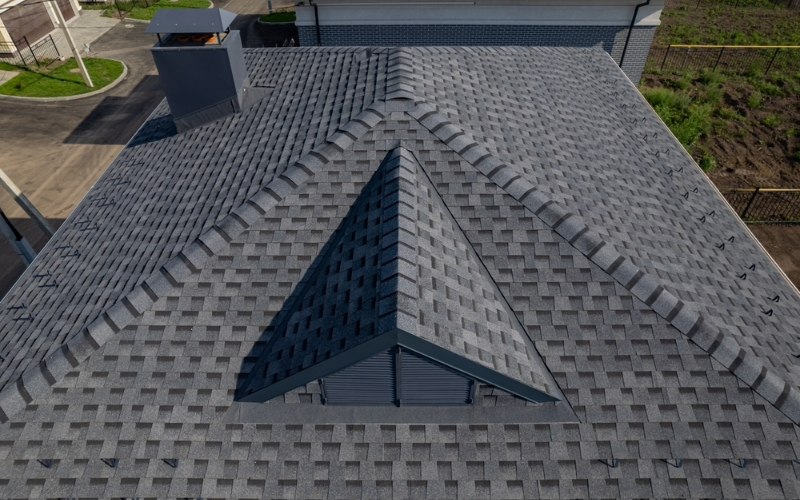You’ve just installed a new roof! Congratulations, that’s a big step in protecting your home for the long haul. But now, you’re left wondering how long it’ll last before it eventually needs to be replaced.
The good news is, most roofs are designed with longevity in mind; you shouldn’t need to replace your roof again for years to come. But just how long that roof will last depends on a few key factors. Keep reading to learn more about the life expectancies of new roofs.
Factors That Determine Your New Roof’s Life Expectancy
Unfortunately, there’s not a cut-and-dry answer when it comes to how long your roof will last. Your roof’s life expectancy is largely dependent on factors such as:
Roofing Material
The most important factor in determining your roof’s life expectancy is the material it’s made of.
Asphalt Roofs
Asphalt shingle roofs, while the most common and cost-effective type of roof, typically have the shortest lifespans. They’ll usually last around 15-30 years, depending on the quality of the shingles and how often the roof is maintained.
Metal Roofs
If you’ve installed a metal roof, you might’ve done so because you heard about its impressive strength and longevity. With lifespans that typically range from 40-70 years, metal roofing systems are built to stand strong against harsh weather, including high winds, heavy rain, and even hail.
Tile Roofs
Tile roofing systems, with proper care and maintenance, can last over 50 years. It’s an incredibly durable material that performs well in virtually any weather. Its natural resistance to heat, moisture, and fire makes it a long-lasting and reliable option for homeowners.
Quality of the Roof Installation
Regardless of the type of roof, if the roof installation wasn’t completed properly, the roof will have a shorter lifespan and won’t be as effective against the elements. Poorly installed roofing systems are more prone to issues like leaks, uneven wear, and structural weaknesses that show up sooner than they otherwise would.
Choosing an experienced and qualified roofing contractor for your new roof installation can put these concerns to rest. By following best practices and paying attention to all the details, a skilled contractor ensures that your roofing system performs as it should from the very beginning.
Your Local Climate and Weather
Weather can take a toll on any type of roof, no matter the material or quality of the installation. If you live in an area prone to frequent storms, intense wind, heavy rain, or snow and ice, your roof is likely to experience more stress and wear over time. Harsh conditions can lead to faster deterioration of materials, loosened shingles, damaged flashing, or even structural issues over time.
Harsh weather conditions can gradually break down roofing materials, weaken seals, and lead to moisture intrusion or structural damage. Even if your roof is brand new, repeated exposure to extreme weather can shorten its expected lifespan.
Preventing Problems With Your Roof
Looking for ways to keep your roof working at its best for as long as possible? Regular maintenance and inspections are key! During maintenance, your roofing company will check for smaller problems, like cracked shingles, clogged gutters, or minor leaks; things that may not seem urgent at first but, over time, can lead to real damage.
Catching issues early means they can be repaired quickly and much more affordably than if they were left alone. The longer that problems go unresolved, the more likely they are to threaten the overall integrity and lifespan of your roof. By investing in routine care now, you’re giving your roof the best chance to last as long as it was designed to. That means more value, more protection, and fewer headaches down the road.
Signs That It Might Be Time to Replace Your Roof
We know you don’t want to think about replacing your roof already… especially if you recently installed a new roof! They’re significant investments, but the fact is that every roof will need to be replaced at some point, and keeping yourself aware of the most common signs to replace your roof can help you plan ahead and avoid major problems.
Cracked, Curling, or Missing Shingles
Shingles that are cracked, curling at the edges, or completely missing leave your roof vulnerable to water damage and structural issues. These are often signs of aging materials or past storm damage, and they can lead to bigger problems if not addressed quickly.
Leaks
If you’re noticing water spots on your ceiling or moisture in your attic, your roof may be leaking. Even small leaks can cause significant damage over time, including mold growth, wood rot, and insulation problems.
Sagging Roofline
A sagging roofline is a red flag that something more serious is happening beneath the surface. It could indicate structural weakening from prolonged moisture exposure or damage to the roof decking, and it should be inspected by a professional as soon as possible.
Missing Granules
Shingles have granules that help protect them from the weather. Over time, though, they can wash away, leaving your asphalt shingles prone to trouble. If you’re finding granules in your gutters or noticing bald spots on your roof, it could be a sign that your shingles are wearing out and may need to be replaced.
Call Us for Reliable Roofing Services in Westchester and Fairfield Counties
Need help with a roofing project in Westchester County or Fairfield County? Perry’s Roofing is here to help! From roof replacement and installation to maintenance and repair, our team is here to help your roof work at its best.
We bring years of experience, trusted materials, and a commitment to quality on every job, no matter the size. If you’re ready to protect your home with expert roofing service, reach out to Perry’s Roofing today. We can help with all your roofing needs!
